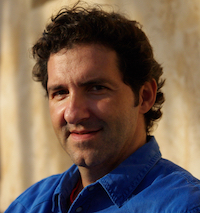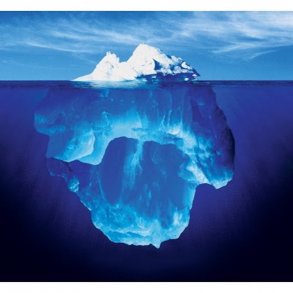Summary/Excerpts by Charlie Efford and Lia Aurami of a longer article by Marco Antonio Robledo originally published by the Integral Leadership Review. Quotations below are from his article; italicized quotations are Robledo’s quotations from other sources.
Marco Antonio Robledo, Professor of Management at the University of the Balearics Islands, Spain, introduces his paper by stating:
“Getting rid of formal bosses does not mean hierarchy disappears. That is a common misunderstanding in this new tendency towards boss-less and flat organizations. In this paper we resort to integral theory and its application to business, 3D Management, to explain how hierarchy is a natural and desirable condition fully compatible with self-management.”
The Problem with Hierarchy
In this section of his paper, Professor Robledo describes how different stages of worldviews regard hierarchies. He notes that the replacement of “hierarchy” with “heterarchy,” within later worldviews, means elements of an organization have no ranking at all. However, this can create problems in itself: “inefficiency, demotivation, endless decision-making processes.” His “3D Management” theory, based on Integral Theory, solves these challenges by proposing holarchies instead of hierarchies or heterarchies.
Holarchy and Integral Theory
“Getting rid of formal bosses does not mean hierarchy disappears, which is a common misunderstanding in this new tendency towards boss-less and flat organizations. The root cause of the problem is the belief, especially of people at the green level of development that hierarchies are inherently bad.
Postmodernism wrongly believes that all hierarchies or value rankings are oppressive and marginalizing. But all of nature contains hierarchies.
Every complex organism is really a hierarchy of parts each part being a whole on its own, but at the same time combining into something more.”
“….the concept holarchy to describe an order where each higher level is more whole than the previous levels: “A normal hierarchy, then, is simply an order of increasing holons, representing an increase in wholeness and integrative capacity”. Holarchy is a “fundamental structural principle of organizations.”
He says “In other words, the organization is a totality whose parts are integrated into a hierarchical whole. As Wilber (1995: 26) puts it:
To be a part of a larger whole means that the whole supplies a principle (or some sort of glue) not found in the isolated parts alone, and this principle allows the parts to join, to link together, to have something in common, to be connected, in ways that they simply could not be on their own.
Hierarchy, then, converts heaps into wholes, disjointed fragments into networks of mutual interaction. When it is said that “the whole is greater than the sum of its parts,” the “greater” means “hierarchy.” It doesn’t mean fascist domination; it means a higher (or deeper) commonality that joins isolated strands into an actual web that joins molecules into a cell, or cells into an organism.”
On the journey to Teal, an organization might be throwing out the baby with the bathwater believing that getting rid of all hierarchy is necessary for self-organization.
In some kinds of hierarchy the “upper levels” dominate or even repress and alienate the lower levels, where communion is sacrificed for control and there is oppression; that is a kind of hierarchy called a “dominator hierarchy.”
Not all hierarchies are dominator hierarchies. Some are natural or “actualization” hierarchies. They can even be “growth hierarchies,” “instruments of growth because their function is to maximize the potentials of the whole. They gently bring together isolated and fragmented elements as letters combine into words, and words combine into sentences and sentences are the fabric of this book.”
Heterarchy is not the cure for dominator hierarchy because it dis-integrates and disjoins the parts of the whole, so they are not aligned on purpose or the wholeness of the organization and become inefficient. That just replaces one pathology with another.
The cure for a dominator hierarchy, according to Wilber, is to remove the elements (people) who abuse their power. Then the system returns to harmony.
It’s really important, in maturing from the Green stage of organizational development into the Teal stage, to be aware of the limitations of Green organizations. In addition to those just mentioned, these include, as Professor Robledo points out:
Individuals lose their unique value and identity because they become fused with the whole organization. Individuals regard themselves and others as just parts, merely a “strand in the web,” with no intrinsic value.
“Thus, pathological heterarchy means not union but fusion; not integration but indissociation; not relating but dissolving. All values become equalized and homogenized in a flatland devoid of individual values or identities; nothing can be said to be deeper or higher or better in any meaningful sense; all values vanish into a herd mentality of the bland leading the bland.” Instead of the one dominating the many, the many are dominating the one. Not a beneficial tradeoff.
The Holarchical Nature of 3D Management
3D Management (Robledo 2004, 2014, 2016) is a pioneer application of integral theory to management. It is the only integrally-built teal theory. 3D stands for “3 dimensional.” (For a longer description of these dimensions and the management theory, see this summary and this book review.) “3D Management is a metatheory that integrates all previous organizational knowledge in an integral, balanced, and non-marginalizing framework that shows a way forward for management practice and makes possible the emergence of more humane, efficacious and responsible forms of business[4].”
“If the traditional organizational holarchy would go from individuals to teams to departments to SBUs to divisions to corporations a holacracy organizational structure of would go from accountabilities to roles to circles (with their own hierarchy) to the organization as a whole[5].
“At the same time, heterarchy and self-management has its place in integral theory and 3D management. Within a given level of any hierarchical pattern, the elements of that level operate by heterarchy…”
“Within each level, heterarchy; between each level, hierarchy. That is the fundamental organizing principle. It entails that a circle cannot go against the purpose of the organization as a whole. It also entails that a person, as a member of a circle, cannot go against the purpose of that circle in the exercise of his/her roles.”
“If you don’t define them in advance, [hierarchies] will emerge informally. There is a spontaneous hierarchy that springs up organically in every instance based on expertise, interest or willingness to step in. Leadership, according with this model, is dynamic. Authority shifts based on who has the most knowledge and experience in a specific context. One accumulates authority by demonstrating expertise, helping peers, and adding value. That means that a person can act as the leader of a team undertaking a particular project and answer to those same team members in another context. Power and authority is not attached to a position as happens in traditional organizations.
“As a result, lots of natural, dynamic hierarchies emerge. These are hierarchies based on influence, not position, and they’re built from the bottom up. I totally agree with Laloux (2104: 135) when he says: ‘it can be argued that there is more management and more leadership happening at any time in Teal Organizations despite, or rather precisely because of, the absence of ultimate managers.’”
For references and footnotes, please see the original article in Integral Leadership Review.
 Marco Antonio Robledo (PhD, MBA) is a full professor of management and director of the MBA at the University of the Balearics Islands (Spain). He defines himself as a change agent who helps organizations and individuals in their integral development and transformation.
Marco Antonio Robledo (PhD, MBA) is a full professor of management and director of the MBA at the University of the Balearics Islands (Spain). He defines himself as a change agent who helps organizations and individuals in their integral development and transformation.
He published a book in Spanish about 3D Management, his pioneer integral theory of management, and several papers about integral business in a number of conferences and journals. He is the founder and leader of the 3D Management Club of Conscious Organizations.
E-mail: [email protected]
Featured Image and block quoting added by Enlivening Edge Magazine.




